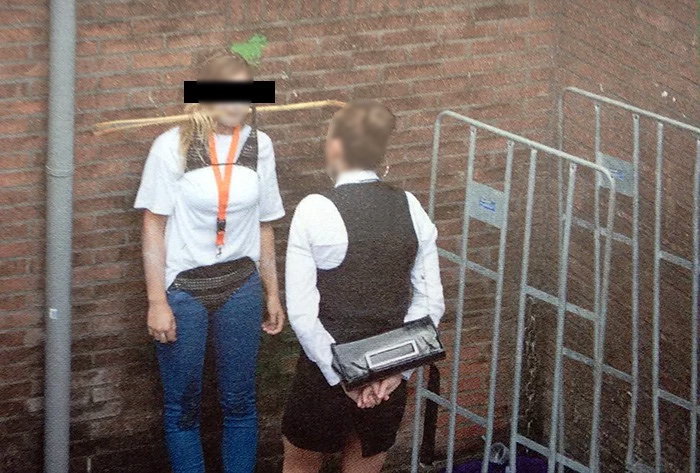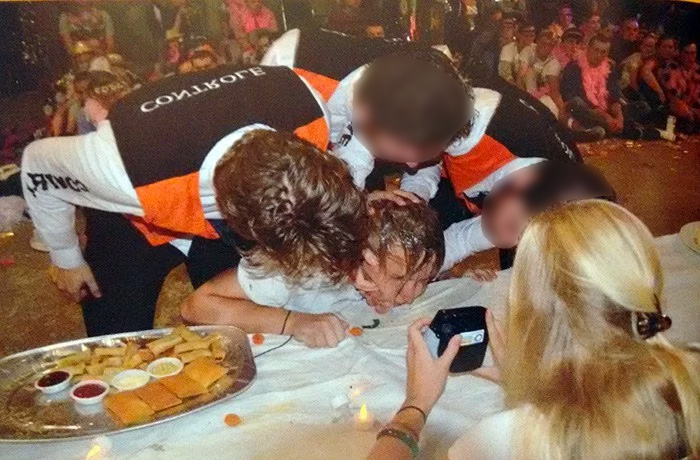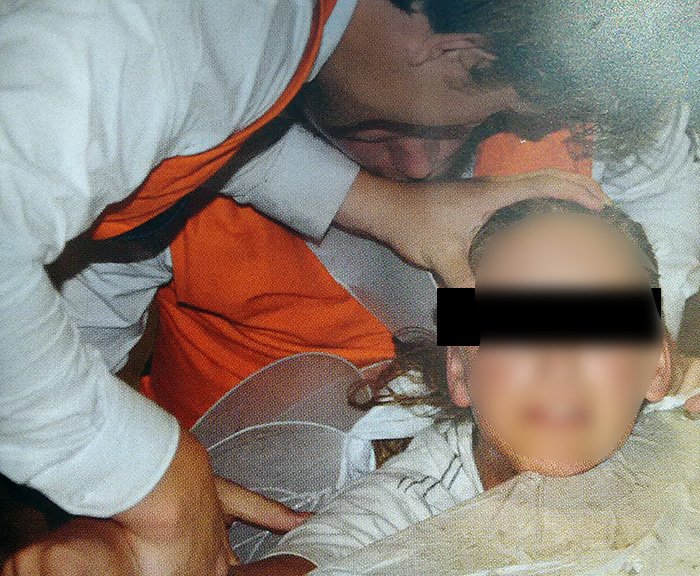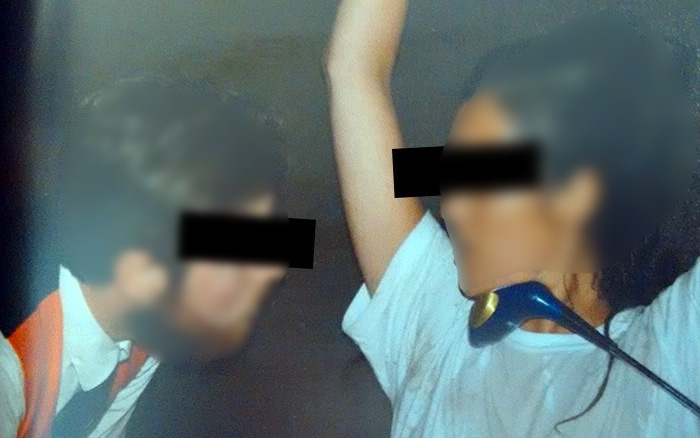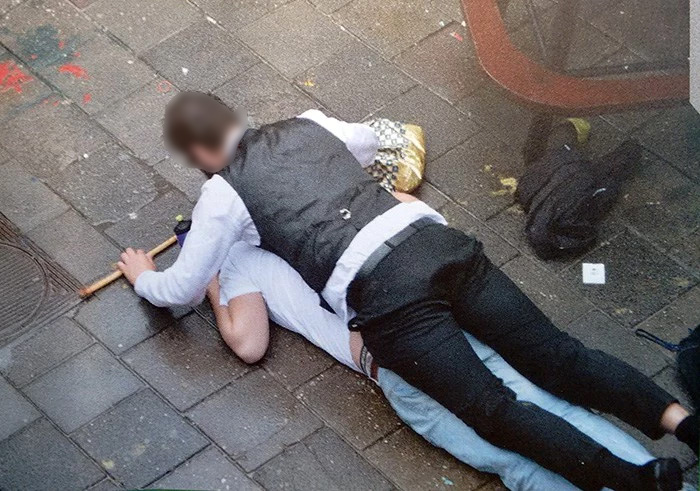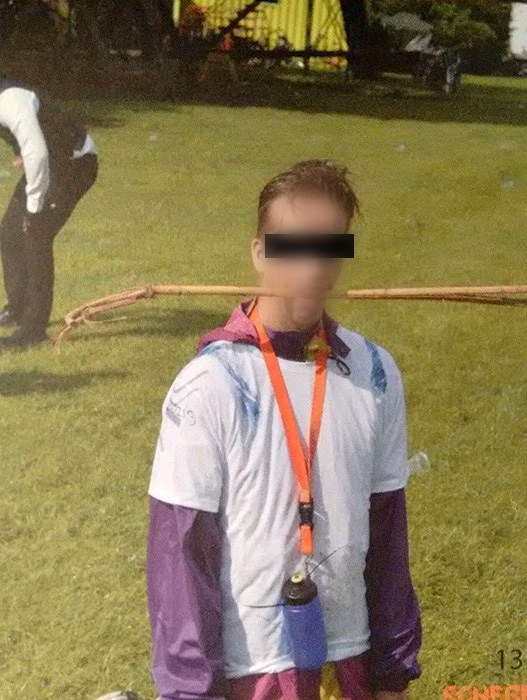It is ‘shocking and degrading’, says faction chairperson Bart Beijer in response to viewing hazing photos from recent Vindicat and Albertus almanacs. ‘It’s just not done anymore.’
Three years ago, the staff party called upon student associations to take a critical look at their hazing practices. ‘Haze responsibly’, the party urged the associations. ‘But they didn’t listen’, Beijer concludes.
The staff members cannot directly interfere with the associations’ orientation practices. But the University Council is in charge of distributing financial support which is used to pay committee grants. ‘Perhaps the boards of the student associations that employ these sorts of practices should no longer receive any grants’, suggests Beijer.
Own identity
However, Beijer thinks the University Council’s student parties would not like that. ‘They’re kind of trying to laugh it off. I think they won’t do anything about it for fear of losing votes.’
Lijst Calimero refuses to interfere in the hazing practices. ‘The associations themselves have full responsibility for their orientation period’, says faction chairperson Nathalie Niehof. ‘It’s important that the associations retain their own identity. We don’t want to mess with that. And besides, it’s up to the students themselves to decide whether they want to join an association that hazes.’
Safety
The RUG’s Advice Committee Orientation (ACI) advises the student associations about students’ safety during orientation and serves as a contact point for incidents. But the committee only responds when the associations approach them about an incident.
‘The ACI doesn’t do anything’, says Beijer. ‘According to the committee, there have hardly been any reports. But students going through this tend to not complain because they want to be a part of the group.’
Student association SOG’s president Alexander van ‘t Hof disagrees. ‘In the past, ACI has worked fine. Anything that goes wrong is kept on file and discussed during the University Council meetings. We act on it, too. There’s a reason there haven’t been any problems for years’, he says.
‘And if the Personnel faction thinks the ACI isn’t functioning properly, they should come up with examples. We have regular contact with the associations, and they say everything is fine. If the Personnel faction feels that there are big problems, we’d love to discuss them’, says Van ‘t Hof.
Monitoring
Student association Vindicat chairman Marijn Achtereekte gladly invites the personnel party to discuss the hazing practices. ‘We evaluate the hazing practices every year, together with former members and the first year students, among others’, he says.
Achtereekte admits that orientation can be an intense time. ‘But we strictly monitor if people get at least six hours of sleep, for example. We do that on the premises of the association, and during the camp, the camp leaders are responsible.’
Physical contact is rare according to the chairman. ‘You’re mainly forced to listen to a lot of stories. That can get pretty tough. During the shut-in week, you have to sit on a bench and listen for ages. For me, that was the hardest part of hazing.’
Update:
The role of the ACI is to advise the study associations and student associations in their plans for the introduction period, according to ACI chairperson Jan Borleffs. The committee is therefore not responsible for the monitoring of or compliance with that advice. ‘The associations are responsible for that themselves’, says Borleffs.
The associations have to report incidents to the committee. ‘In this manner, the ACI can be helpful in ensuring that the incident is handled correctly. The most important goal at that moment is the health of the student’, according to the chairperson.
The associations also provide the phone numbers of the ACI to the first year students and their parents. Borleffs: ‘The ACI responds to all reports regardless of their nature, investigates the circumstances of the incident and the manner in which it is handled, and gives advice about how such an incident could be avoided in the future.’
Update 2:
The photos which were originally published in this story have been (temporarily) removed from the site due to a difference of opinion between the UK and Vindicat about the copyright of the photos. The photos were originally printed in the almanacs (2015 and 2016) of Vindicat and Albertus Magnus.
Update 3:
After consultation with a legal professional, the UK editorial staff decided to republish the previously removed images.




